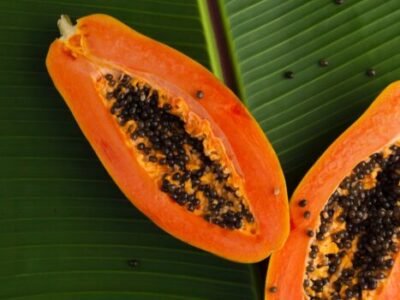Biomimicry is a scientific, research-based practice of learning from and replicating nature’s forms, processes, and ecosystems to create more regenerative designs.
Velcro is an excellent example of a design solution inspired by a natural structure and function. In 1948 a Swiss engineer wondered why burdocks attached so easily to his clothing and his dog’s fur. When examining the burrs under a microscope, he noticed they were covered with hooks that attached firmly to looped fabrics and human and animal hair. And so he invented Velcro.
And now, zoologists at Kiel University have discovered highly adhesive cellulose nanofibers that may have commercial applications.
In nature, the seeds of many fruits are spread after being eaten by birds and later excreted. This is possible because the seeds aren’t destroyed during digestion due to a self-forming mucous sheath that also forms when the seed comes into contact with water.
Pectins in the shell of the seeds absorb water and create a gel-like capsule protecting the seed. This protective sheath is attached to the surface of the seed by fine vertical cellulose fibers about 100 nanometers in thickness. The adhesive properties of the nanofibers are similar to the microscopic adhesive elements of gecko feet.
The structural arrangement of these nanofibers makes them almost as strong an adhesive as carbon nanotubes. And since the health effects of using carbon nanotubes have yet to be entirely determined, this cellulose nanofiber may be an alternative for the biomedical, cosmetics, and food industries.
Plus, the fiber’s tensile strength, electrical conductivity, and friction contribution make them promising alternatives for industrial applications.








